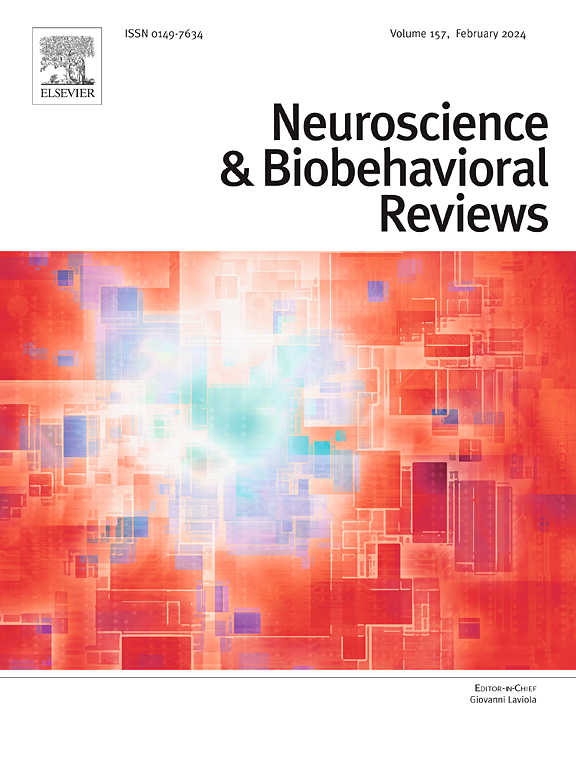雄性黑腹果蝇交配持续时间——研究人脑间隔时间功能的新遗传模型。
IF 7.9
1区 医学
Q1 BEHAVIORAL SCIENCES
引用次数: 0
摘要
时间感知对生存至关重要,它使动物能够估计和控制事件之间的间隔,这是复杂行为的基础。虽然大脑在不同的时间尺度上有效地处理时间信息,但控制这种能力的神经和遗传机制仍然知之甚少。尽管研究已经确定了与时间信息有关的大脑区域,但对时间感知的遗传探索滞后,特别是在昼夜节律之外。神经科学的进步现在允许神经递质和神经肽的遗传操作来研究神经回路,但是对时间的分子基础的全面理解仍然是难以捉摸的。由于缺乏整合行为、神经和遗传数据的模型系统,这种差距仍然存在。在这种背景下,我们提出雄性交配持续时间作为一种新的间隔时间模型,因为它为研究遗传因素与时间加工之间的相互作用提供了一个独特的框架。建立这样一个系统需要跨计算神经科学、分子遗传学和行为遗传学的多学科努力,以揭示定时过程的统一原则。本文章由计算机程序翻译,如有差异,请以英文原文为准。
Mating duration of male Drosophila melanogaster – A novel genetic model to study interval timing function of human brain
Time perception is essential for survival, enabling animals to estimate and control intervals between events, which underlies complex behaviors. While the brain efficiently processes temporal information across various timescales, the neural and genetic mechanisms governing this ability remain poorly understood. Although research has identified brain regions involved in timing information, genetic exploration of temporal perception lags behind, particularly outside circadian rhythms. Advances in neuroscience now allow genetic manipulation of neurotransmitters and neuropeptides to study neural circuits, but a comprehensive understanding of the molecular basis of timing remains elusive. This gap persists due to the lack of a model system that integrates behavioral, neural, and genetic data. In this context, we propose male mating duration as a novel interval timing model, as it provides a unique framework to study the interplay between genetic factors and temporal processing. Establishing such a system requires multidisciplinary efforts across computational neuroscience, molecular genetics, and behavioral genetics to uncover unifying principles of timing processes.
求助全文
通过发布文献求助,成功后即可免费获取论文全文。
去求助
来源期刊
CiteScore
14.20
自引率
3.70%
发文量
466
审稿时长
6 months
期刊介绍:
The official journal of the International Behavioral Neuroscience Society publishes original and significant review articles that explore the intersection between neuroscience and the study of psychological processes and behavior. The journal also welcomes articles that primarily focus on psychological processes and behavior, as long as they have relevance to one or more areas of neuroscience.

 求助内容:
求助内容: 应助结果提醒方式:
应助结果提醒方式:


